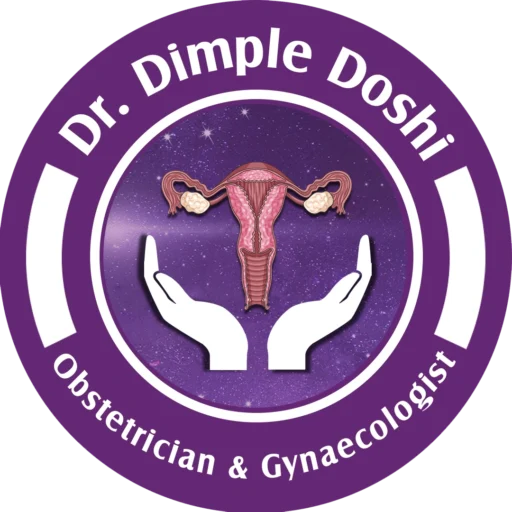Expert Hysteroscopic Adhesiolysis in Goregaon West, Mumbai
What is Hysteroscopic adhesiolysis?
Hysteroscopic adhesiolysis is a surgical procedure that involves the removal of intrauterine adhesions or scar tissue within the uterus. This minimally invasive intervention aims to restore normal uterine function, often addressing fertility issues and promoting reproductive health in individuals with Asherman’s syndrome or related conditions.
Adhesions are bands of scar-like tissues that form between two surfaces inside the body and make them stick together. When such bands develop inside the uterus the condition is called Asherman syndrome. Ashermans syndrome is now being increasingly diagnosed due to the use of hysteroscopy.
The scarring can be mild with thin stretchy tissues or severe with thick bands of adhesions causing total destruction of the uterine cavity.
These intrauterine adhesions can be cut or removed using hysteroscopy. This procedure is called Hysteroscopic lysis of adhesions.
INDICATIONS FOR HYSTEROSCOPIC ADHESIOLYSIS
- Menstrual disturbances
- Infertility
PREOPERATIVE PREPARATIONS
- You will be asked to carry all your investigation reports which include your complete blood count; liver, thyroid; kidney function tests and other preoperative tests, and the x-ray chest.
- You will be asked to stop the medications like estrogen-containing medicines a month prior to surgery and also blood thinners like aspirin at least a week prior to surgery.
At the same time you will be asked to continue your thyroid; blood pressure and diabetes medications. - You will be asked to report any signs of illness in case you have it prior to surgery.
PROCEDURE OF HYSTEROSCOPIC ADHESIOLYSIS
- This procedure is done under general anesthesia in the operating room or when u are awake by office hysteroscopy if the adhesions are thin..
- The uterus is distended with normal saline.
- The adhesions are directly visualised after a tiny hysteroscope which is attached to a high definition camera and monitor is inserted through your cervix.
With this procedure, the adhesions are cut using very thin and slender hysteroscopic scissors. Your gynecologist may send the cut tissues for biopsy.
POSTOPERATIVE PERIOD
- You will be in the recovery room for 2 hrs after you wake up from anesthesia. You may feel sleepy for the next few hours after which you will be shifted to your room.
- You may have some discomfort in the area or you may feel tired for a few days after the procedure but with each passing hour you feel better.
- Contact your doctor immediately if pain does not go away or if it is associated with nausea and vomiting or any other problems.
RECOVERY AND DISCHARGE AFTER HYSTEROSCOPIC ADHESIOLYSIS
You will be asked to start taking clear liquids 1 hr after the surgery followed by a light diet. You may be asked to walk around after you are out of the sedation.
Once your doctor is sure that you can walk without any giddiness due to anesthesia medicines; you will be discharged.
COMPLICATIONS OF HYSTEROSCOPIC ADHESIOLYSIS
As with any surgical procedure, there are associated risks and complications which include:
- Problems of anesthesia
- Injury to internal organs
- Bleeding and infection
Any specific risks and complications will be discussed with you prior to the procedure.
FAQ of HYSTEROSCOPIC UTERINE ADHESIOLYSIS Surgery
Q: WHAT IS HYSTEROSCOPIC UTERINE ADHESIOLYSIS?
A: Adhesions are abnormal bands of tissues attaching two otherwise separate normal tissues. Such adhesions may be present inside the uterus, and cutting these adhesions with hysteroscopy using specially designed scissors is called Hysteroscopic lysis of adhesions.
Q: IS HYSTEROSCOPIC ADHESIOLYSIS SAFE?
A: Yes, it is safe in the hands of an expert as Hysteroscopic lysis of adhesions is a surgery requiring skill and expertise.
Q: CAN YOU GET PREGNANT AFTER HYSTEROSCOPIC ADHESIOLYSIS?
A: Yes, it is possible to get pregnant after Hysteroscopic lysis of adhesions provided that the adhesions are not due to a disease like tuberculosis which damages the uterine lining to its depth.
Q: IS HYSTEROSCOPIC ADHESIOLYSIS A MAJOR SURGERY?
A: Yes, it is a major surgery if there are extensive adhesiolysis; but if the adhesions are minimum; it can be done very fast and can be considered minor surgery.
Q: HOW IS THE RECOVERY FOLLOWING HYSTEROSCOPIC ADHESIOLYSIS?
A: You can be discharged the same day following Hysteroscopic lysis of adhesions and can resume all daily activities following hysteroscopic adhesiolysis.
Q: WHAT IS THE COST OF HYSTEROSCOPIC ADHESIOLYSIS?
A: The cost of Hysteroscopic lysis of adhesions ranges from 25000 to 60000.
Q: HOW MUCH TIME DOES HYSTEROSCOPIC ADHESIOLYSIS TAKE?
A: It takes 8 to 20 minutes depending upon the severity and the extent of adhesions inside the uterus.
Q: IS HYSTEROSCOPIC LYSIS of ADHESIONS NECESSARY TO TREAT INFERTILITY?
A: Hysteroscopic lysis of adhesions is a necessary step to do if there are adhesions inside the uterus.
